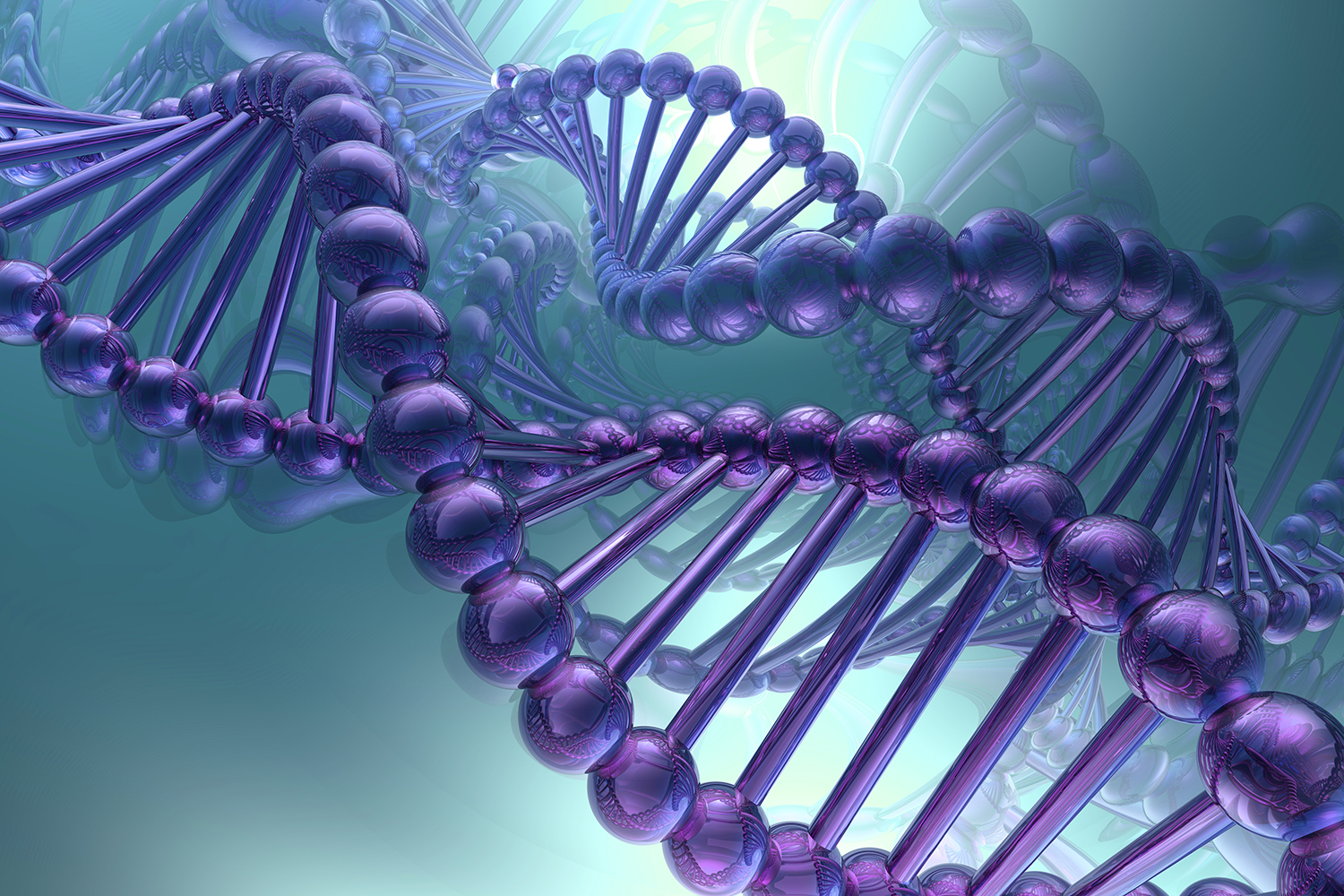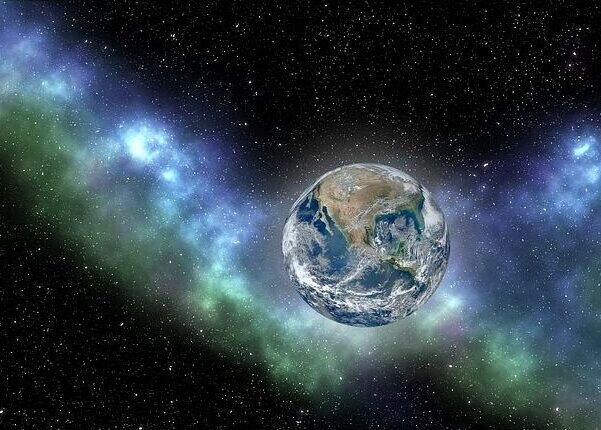What is Reality?
What is Consciousness?
What is the Meaning of Life?
– Therner & Loeth, Riel –
This text is based on The Cosmic Worldview – Martinus Cosmology, presented by the Danish intuitive philosopher Martinus and his student and collaborator Per Bruus-Jensen.
Read more: 2.1 Martinus – Martinus Cosmology, 2.2 Martinus and Per Bruus-Jensen – The Cosmic Worldview
What is Reality?
In everyday experience the physical world is experienced as the “actual” reality from which everything seemingly arises and lapses. However, quantum physics suggests that it is not that simple. The physical world consists of quanta, the smallest units of energy that we know of in the physical universe. Each of these quanta can be in different places simultaneously and have the ability to be linked together independently of time and space.
Leif Pettersson describes, among other things, this phenomenon – based on a famous experiment performed in 2008 in Switzerland – in his book Physics, Martinus Cosmology and the Theory of Everything under paragraph 2.26, Photons puzzle scientists:
Two photons that “belong together”, i.e. they are “entangled” as quantum physicists express it, were separated by being sent off in different directions. In the experiment conducted in Geneva, both photons were sent through a fibre optic cable, one of them to the village of Satigny and the other one to the village of Jussy. The villages are located 18 kilometres from each other. When the two separated photons were studied in terms of how their properties varied, it became clear that one photon immediately knew what the other one was exposed to. This is in accordance with quantum mechanical laws. If information travelled between the photons it would have to go at least 100 000 times faster than light, which according to physics is impossible. Researchers cannot explain this phenomenon. This study and related research findings are published in Nature vol. 454, 14 August 2008, p. 861-864.
It should be added that Pettersson, on the basis of Martinus Cosmology – the Cosmic Worldview, presents an explanation for the phenomenon above.
However, the physical universe constitutes just a tiny droplet compared to the subtle sea of energy that we call the quantum vacuum that is all-pervasive and from which seemingly all physical reality arises. One usually imagines a vacuum as empty space, but from a quantum mechanical perspective it is actually full of activity, the so-called vacuum energy/ zero-point energy is present everywhere and in everything.
According to the Cosmic Worldview, quantum physics clearly demonstrates how science has reached the limits of measurement and observation in a “universe of distances” and has now begun to move into a “non-local universe of states”. This, in fact, describes a transition from a physical “universe of distances” to a paraphysical* “universe of states”. The quantum vacuum is the first encounter with this transition and represents a doorway into this world of dimensions beyond our present knowledge of space and time. At this juncture, we begin to get a little bit closer to an increasing understanding of both the physical and the paraphysical worlds and how they are interconnected – and the Cosmic Worldview leads us further to a completely new understanding of reality. A new voyage of discovery is beginning – exploring the infinite, living, multidimensional Cosmos with its countless forms of physical and paraphysical life, and we are beginning to gain insight into a Greater Reality …
According to Martinus, everything created – both our outer world and our inner world – consists of seven extremely subtle qualitative energies, (i.e. energies with different properties and qualities) the so-called cosmic basic energies*. And it is, among other things, at this elementary level that the Cosmic Worldview meets traditional physics and the so-called vacuum energy/ zero-point energy.
*Read more: the Cosmic Basic Energies
Martinus and his collaborator Per Bruus-Jensen describe the basic nature and structure of life and reality, and state that the physical world is essentially an “illusion”. The actual and underlying reality is fundamentally a question of immaterial emptiness and stillness. As this primordial form is unknown to man, Martinus has chosen to express it with the letter “X”, (as in mathematics this is the symbol of the first unknown in an equation). Life and reality in its basic form cannot be explained by or compared to anything known, therefore Martinus also expresses it as “a nameless Something that is”. The primordial or initial reality (the so-called X0-nature characterized by emptiness, stillness, infinity, eternity) underlies everything that exists, has existed and will exist.
Martinus describes life and reality as an integrated triune principle (the triplementary principle) with three functional aspects: X1, X2, X3. In this short introductory text, we will very briefly elucidate only the first aspect; “X1”, the eternal living Subject/I which is immutable (absolute emptiness and stillness).
The Subject/I (X1) is the authority that experiences life and that always sees the world from different perspectives. The Subject/I is present in all life and it is argued that the fact that we experience, i.e. that we have experiences – implies that there is something/ someone who has these experiences. We are not our experiences, we are not our thoughts and feelings, but we are first and foremost the Subject/I that experiences them. The Subject/I is the fixed point of all life and of each and every one of us, as well as of the infinite, all-encompassing Cosmos.
Thus the all-embracing “universal” subject/I (X1) is divided into different parts/units that are each individual “life-units”, which implies experiences from infinitely different and various perspectives. This means that the Subject/I of every individual life-unit is in essence identical to the universal Subject/I. I.e. the universal Subject/I experiences everything through different individual life-units, each with an individual Subject/ I-core and a Subject/ I-perception. The all-encompassing, immutable, universal Subject/I is eternal, which means every life-unit is also an eternal life-unit, (thus, the I survives the state we call death).
Martinus emphasizes that the ultimate characteristic of life is movement and there are life-units behind all motion in the universe. The Cosmos itself is structured as life-units inside other life-units (this organization is an effect of the so-called Life-unit Principle, one of the Cosmic Creative Principles/ morphogenetic constants* that organizes life and reality). This “arrangement” with life within life continues indefinitely in the micro-, meso- and macrocosm. All living entities are immortal life-units, linked together as parts of the conscious, infinite, multidimensional Cosmos.
*Read more: the Cosmic Creative Principles
According to the Cosmic Worldview, there are both physical and paraphysical worlds that are constantly developing in an eternal evolutionary, ascending spiral (the Cosmic Evolutionary Spiral). From this perspective, it is not at all remarkable that quantum physicists find a subtle sea of energy everywhere and that quanta are shown to be capable of linkage regardless of space and time. With quantum physics we stand on the edge of discovering a paraphysical universe from where a cosmic consciousness constantly maintains the physical universe at all levels, in the micro-, meso- and macrocosm – from quanta to galaxies.
Support for this view of reality is provided by discoveries that show how our universe has grown and evolved throughout billions of years in an extremely well-coordinated and organized manner wherein complex life has had the opportunity to exist and develop. So far, we have come to the conclusion that approximately thirty precisely tailored natural constants along with their specific interactions are required to create a basis for what we term biological “life”, and to enable the universe to evolve – an entirely ingenious construction down to the smallest detail … Based on these facts it is relevant to ask: Where do these exact conditions come from? Why does the universe work and why does it exist at all?
Among Martinus’ statements we find the answers, i.e. a conscious, infinite universe that functions via conformity to laws and eternal principles; a living universe that grows, lives and “dies”, (and through macro-reincarnation is constantly evolving towards higher consciousness and life-forms). As such it creates conditions for individual life-units to gain experience on the physical plane. This is made possible through collaboration and interaction between life-units on different levels and in different dimensions within the living, infinite and all-embracing Cosmos.
The attempts of the natural sciences to understand how reality is designed and how it functions are based on time-limited analyses, e.g. “from the Big Bang to the present”. On the other hand, Martinus’ analyses are based on an eternal perspective. However, he points out that science, through its main discoveries is moving towards what he calls “Cosmic Science”. Natural sciences can only describe reality from the “physical outside” and have not discovered the reality of the underlying paraphysical realm.
In this context, we would like to mention some new theories that illustrate a conscious, eternal, infinite universe that, even if not identical to Martinus’ description of the living universe, are fascinating. For example, Erwin Laszlo, (philosopher of science, systems theorist, integral theorist) describes a conscious universe and claims that physical reality rests upon an underlying immaterial reality. Menas Kafatos (physicist) and Robert Nadeau (science historian) also describe a conscious universe. The astrophysicists Paul Steinhardt and Niel Turok present Endless Universe – beyond the Big Bang (Cyclic universe). According to their theory, the Big Bang was not the beginning of time, but the bridge to a past filled with endlessly repeating cycles of evolution, each accompanied by the creation of new matter and the formation of new galaxies, stars, and planets. Roger Penrose (mathematician, physicist and philosopher of science, Nobel laureate in Physics 2020) suggests in Cycles of Time Time – An Extraordinary New View of the Universe, that our universe is neither the first nor the last, but, on the contrary, is an endless process with recurring “Big Bangs” where one universe replaces the other. Brian Greene (physicist and mathematician): There may have been many Big Bangs, one of which created our universe. The other bangs created other universes.
Reality
Initial Reality, Objective Reality and Subjective Reality
Martinus and his collaborator Per Bruus-Jensen describe the different dimensions and planes of existence and reality – physical and paraphysical worlds, and the eternal process of evolution.
The three aspects/”levels” of reality – initial reality, objective reality, subjective reality – are also explained, and their interconnection and transformation processes:
The unmanifested initial reality and the process of transformation into manifested objective reality (manifestation process) and the process of transformation that involves the experience of objective reality as subjective reality (perception process).
This bidirectional manifestation-perception process is termed the X-RCT Process* and describes the transformation from emptiness and stillness (initial reality) – to movement and quanta (objective reality) – to qualia (subjective reality).
* the Reality-Consciousness Transformation Process – X-RCT Process (Therner & Löth, NCP X-AIONS)
What is Consciousness?
We all experience life through our “consciousness”, but this inner world is an unsolved mystery. Contemporary materialists argue that human consciousness consists exclusively of brain processes and a complex of mental and psychological characteristics such as emotions, thoughts and memories. However, within areas such as consciousness studies, psychology and parapsychology we find an extensive and ever-increasing amount of significant data and research findings relating to clairvoyance, telepathy, precognition, past-life memory and near-death experience etc. that cannot be incorporated into the materialistic view (i.e. that consciousness is dependent solely on the brain). Overall there is an urgent need for a radically different understanding and perception of consciousness and its relationship to the world around us.
Looking for consciousness in the brain is like looking inside a radio for the announcer.
Nassim Haramein
Consciousness is a “result” of the interaction between the individual I and the different organic structures of the individual total organism complex, particularly within the immortal/eternal paraphysical organism.
Per Bruus-Jensen
According to the Cosmic Worldview (as mentioned above in Part 1 ”What is Reality?”) the all-embracing “universal” subject/I (X1) is divided into different parts/units that are individual “life-units”, therefore the Subject/I of each and every life-unit is in essence identical to the universal Subject/I. The infinite universal Subject/I (of the all-encompassing Cosmos) is eternal, which means that every life-unit is also an eternal life-unit. The eternal, universal Subject/I experiences everything through discrete life-units, each with an individual Subject/ I-core and a Subject/ I-perception.
This is achieved by consciousness being carried by different organic structures: a temporary physical structure; the physical body – and a paraphysical immortal, structure; the eternal body. These two structures are linked together by a temporary semi-physical structure (“interface”, transformation function); the switching body. Thus, the total organism complex includes and operates through three organic levels:
A. Physical
The “Physical Body” – temporary status, dependent on B and C
B. Semiphysical
The “Switching Body” – temporary status, link and transformation function between A and C
C. Paraphysical
The “Eternal Body” – eternal status, exists and operates independently of A and B
Every life-unit thus, has an eternal I and an eternal paraphysical body/ structure that exists and operates totally independently of the temporary physical body. This means that life and consciousness are independent of the physical brain and body – and that the Subject/I is continuously and eternally able to create and experience through the immortal body, (where all experiences, abilities and skills are also stored).
The Cosmic Worldview describes the nature of consciousness and the perception process (the Reality-Consciousness Transformation Process, X-RCT Process) which comprises different “organic” levels and explains how and why we have subjective phenomenal experiences, qualia (providing a profound solution to the “explanatory gap” and the “hard problem of consciousness”).
Martinus and his collaborator Per Bruus-Jensen describe the aforementioned semiphysical and paraphysical structures and their processes which, side by side with the activities of the physical brain, constitute the foundation of our ability to experience, remember, think, feel etc. – in fact, of all activity within our consciousness.
The “I-perception”, the “central point” we refer to and express as “I”. One can find evidence for the existence of an eternal, immutable Subject/I within us by referring to the perception we have of being the same person throughout our life, even though our physical body changes and ages and our mind matures. There is something within us that experiences this and finds it strange that the body and the mind have changed so radically. You still feel that you are the same person now as you were when you were young. This is due to the fact that you are neither your body nor your consciousness, but you are the Subject/I in possession of your body and mind. Martinus states that one can come to this conclusion by analysis, for instance the fact that an experience cannot be experienced by another experience. We can also ask: Can a feeling or thought be experienced by another feeling or thought? If this is the case one may ask what the difference is between emotions that are experiencing and emotions that are experienced? …
According to Martinus, experiences imply the existence of an experiencer. The experiencer cannot be found inside the brain either, where only electrochemical processes can be observed.
An experience consisting of colours and shapes does not exist within the brain, but in our subjective paraphysical “space of consciousness”, i.e. in our personal and completely private world and reality. Experiences are immaterial phenomena only existing for the subject/ I (X1). This can be illustrated by the following: Close your eyes and imagine an apartment building of the same size as it is in reality. Now, where does this apartment building exist? It is too big to be inside the brain and also it cannot be observed through electrophysiological investigations. ‒ It is only to be found within the “non-local world of conditions”, not bound by space and time.
All life ‒ every life-unit ‒ comprises an I /subject with a double function; that of creator and experiencer. This is made possible by the fact that the I/subject has the ability to create and experience through an associated organism with an immortal paraphysical body structure. Taken together and very briefly expressed: all life consists of an indivisible triune operating principle (the triplementary principle X) that could theoretically be split into:
X1 the creator and experiencer, the subject/I
X2 the creative and experiential ability
X3 the created and experienced
Read more: the X-Structure
All life – all living beings – are conscious, immortal, creating and experiencing life-units under constant development within the all-embracing multidimensional Cosmos.
Consciousness
Consciousness as such, does not exist inside the brain, but in an absolutely personal (subjective), immaterial world and reality that our individual I (X1), in interaction with our total organism (physical, semiphysical and paraphysical), continuously generates.
Consciousness is a result of the interaction between the individual I (X1) and the different organic structures of the individual total organism complex, particularly within the immortal/eternal paraphysical organism.
Consciousness is an organic part of the living being.
Per Bruus-Jensen
What is the Meaning of Life?
 Today, the meaning of life is considered a religious issue – a matter of faith by most people. According to Martinus we are in an evolutionary process from faith towards knowledge. In other words, we are in a transitional phase in which humanity is about to free itself from the religious dogmas of faith and is moving towards a new kind of science. Martinus refers to this as “spiritual science” and he also explains that it will accommodate natural and traditional science and develop a new all-encompassing “Cosmic Science”. This development of science enables exploration of the immaterial and paraphysical aspects of life and reality. The main objectives will be to explore the real nature of life and reality, and thereby the meaning of life based on scientific criteria. Taken as a whole this means a transition from faith to knowledge and insight.
Today, the meaning of life is considered a religious issue – a matter of faith by most people. According to Martinus we are in an evolutionary process from faith towards knowledge. In other words, we are in a transitional phase in which humanity is about to free itself from the religious dogmas of faith and is moving towards a new kind of science. Martinus refers to this as “spiritual science” and he also explains that it will accommodate natural and traditional science and develop a new all-encompassing “Cosmic Science”. This development of science enables exploration of the immaterial and paraphysical aspects of life and reality. The main objectives will be to explore the real nature of life and reality, and thereby the meaning of life based on scientific criteria. Taken as a whole this means a transition from faith to knowledge and insight.
This new science will engage with and focus mainly on the deep aspects of objective and subjective reality and the interactions between them; e.g. the nature of objective reality and the experience of it as subjective reality; how, via our different organic structures, we transform objective reality into subjective reality (and why we have subjective phenomenal experience – qualia). This will also lead to the realization that our subjective experience constitutes a very limited picture of reality as it is; i.e. our recognition and growing understanding of paraphysical reality (including much of what today is termed “paranormal”) and of the transformation between physical and paraphysical life and reality including life after death, reincarnation etc. …
Martinus claims that unless we have a comprehensive overview and considerable insight into both aspects of reality (the nature of objective and subjective reality) along with their interactions we cannot truly understand either the meaning of life or the nature of existence and reality.
Martinus distinguishes between what he calls “the old world-impulse” and “the new world-impulse”. People who are inspired by and attracted to the old world-impulse will find the meaning of life based on the ability to believe, which is motivated by instinct and feeling. Humanity is about to leave this phase and a new era will begin. We have reached an evolutionary level at which our instinct decreases and intelligence increases and begins to play a greater role in our lives. This, among other things, means that we want to understand and prove everything.
This need cannot be satisfied by faith-based religions which is why many people have become atheists. Today’s science-based materialism is an expression of this development. According to Martinus this is not a step back, but actually an expression of the first cultural foothold of the new world-impulse that in time will lead to a paradigm shift – a new worldview and a new understanding of life and reality. The advance of science with its breakthroughs was the foundation for atheism, whilst more recent scientific discoveries are also about to challenge and invalidate this atheism. More and more new scientific research clearly points towards a more organic and holistic worldview.
The biologist Rupert Sheldrake is one of many researchers who have begun to question and criticize traditional materialistic science. In his book The Science Delusion (new edition 2020, published in the US as Science Set Free) he clearly explains the “ten dogmas of modern science” that he maintains are holding back science and discovery.
The Science Delusion is the belief that science already understands the nature of reality: the fundamental questions are answered, leaving only the details to be filled in. Sheldrake shows that science is being constrained by assumptions that have hardened into dogmas. The scientific worldview has become a belief system assuming, among other things, that all reality is material or physical; the world is mechanical and made up of dead matter; nature is purposeless; consciousness is nothing but the physical activity of the brain and God exists only as an idea in human minds.
Sheldrake states that the idea of nature as a purposeless mechanical process without meaning or direction is by no means a proven scientific reality. He examines these dogmas scientifically, and convincingly demonstrates that without them science would benefit greatly by being freer, more interesting and more capable of increasing our understanding of the true nature of life and reality. According to Sheldrake, the prevailing machine metaphor for the universe is outmoded and will be replaced by the view of the universe as a living, developing organism – and here we can add that this is clearly approaching the Cosmic Worldview …
Globally we are in a transitional phase where we find both the old world-impulse (faith-based religions) and the new world-impulse, including traditional science, that first lead to science-based materialism and atheism, then on to a new, budding “spiritual science” that over time will develop an all-embracing “Cosmic Science” and lead humanity towards cosmic consciousness. During this intermediate and transitional stage there is much confusion with many different directions represented – all expressing disparate points of view and options (even though this helps to develop our ability to discern and judge).
Already in our time many people experience so-called “spontaneous cosmic glimpses”, including “experiences of oneness”, etc. In the next two hundred years more people will have these holistic and unifying experiences, such as the realization that life is eternal without being able to explain it in detail. Science will also make new discoveries demonstrating that the mind can communicate independently of time and space, that death is not the end of life and that all life evolves through cycles of reincarnation. This new culture will be based on knowledge of and insight into the answers to the great questions of life. People will gradually be able to contact the paraphysical worlds and eventually realize the same truths as did Martinus. This will lead to a significantly better world and way of existence for all life on Earth. Without detailed knowledge of Martinus’ analysis, this might seem like wishful thinking or wild fantasies. But think about how today’s welfare society, with all its advanced techniques and information technology, would have been perceived by the ancients. Indeed, just think back a century and consider the amazing and accelerating developments in science, technology, communication, etc.
New research in the social sciences also provides evidence signifying that the abovementioned development has already begun and is in progress. Here, for example, can be mentioned two large-scale, transnational and longitudinal survey research programs: the World Values Survey Association (WVSA) and the European Values Study (EVS). WVSA is an association of social scientists at Michigan University in the U.S. who, since 1981, have been investigating how communities have changed worldwide. WVSA and EVS are the largest long-term studies of humanity done to date. One can discern a clear progression from traditional values to more democratic and individualistic values, and also increasing care for the environment, climate, animal welfare etc. in many places. In this phase, the traditional faith-based religions lose ground but as welfare states arise, there appears a new need to find a superior meaning to life and existence. This often leads to an individualized form of spirituality. These findings are also confirmed by the Gallup Millennium Survey. This scenario is, to the highest degree, consistent with Martinus’ description of the first phases of transition from the old to the new world-impulse.
Currently the challenge is to create a global welfare society. However, even in our present limited and inadequate welfare societies, we observe an increasing need to find and relate to the meaning of life in a deeper and more nuanced way. This indicates that once a global welfare society has been established in ecological balance with nature and the planet, the next challenge will be to relate to the meaning of life. A new culture of knowledge will emerge having a greater relevance to Martinus’ analysis. The latter will function as a map and guide to a deeper understanding of life and reality. A new voyage of discovery begins where we explore the infinite living Cosmos with all its countless physical and paraphysical dimensions and life forms.
Martinus emphasizes that man will only come to really understand the meaning of life by first developing “real human feelings” which implies the development from egoism to altruism, combined and in balance with high intelligence. A very important and noticeable effect of this development of consciousness is that we will only use our intelligence for positive and constructive purposes and act lovingly and caringly towards all life. At this stage of development there will automatically be an opening up of intuition in our consciousness which will, in fact, result in a completely new understanding of reality and the meaning of life. The Cosmic Worldview demonstrates that all forms of life and their varying existences are vitally important and meaningful at both individual and universal levels.
According to Martinus’ analysis, there is a meaning to everything that happens, but in order to realize and understand this, one must consider the development in a much broader and more long-term perspective than that attained by humanity so far.
Martinus Cosmology trains us to see life from an eternal perspective and when we are able to translate this into our actions in everyday life, then we start to live according to the analysis by contributing to the welfare and happiness of our fellow human beings and all other forms of life on Earth. It should be emphasized that this Cosmic Worldview is pragmatic and easily adapted to everyday use. For the people of the future, this will be the only possible way to live meaningfully. The project has already begun and each one of us can consciously choose to be a part of it.
The Meaning of Life
The meaning of life is to create, experience and develop towards new and ever higher consciousness and life forms, which applies to all life.
All forms of life and their varying existences are vitally important and meaningful at both individual and universal levels.
The journey of life does not begin with birth and end with the death of the physical body. Life is eternal and all living entities are immortal “life-units”; parts of the conscious, multidimensional and all-encompassing Cosmos.
Everything has a meaning and nothing happens by chance and coincidence. The often dark and painful developmental phase that man has undergone and is still undergoing constitutes a necessary learning time and prerequisite for development towards a brighter and more loving existence. We are now approaching a new phase and a breakthrough that lead us into a New Era!
– Welcome to New Cosmic Paradigm and a Greater Reality!
Skövde and Copnehagen, July 2011, rev. update July 2021
A. & B. Therner NCP, S. Löth M.D., Ph.D., A. Riel MA.Phil.
Brief Overview – Some of the Fundamentals and Principles of
The Cosmic Worldview – Martinus Cosmology – Read more …
- Life and Consciousness Beyond Death – Existence and Immortality – How we Survive Death, read more …
- Consciousness – The Perception Process and Qualia – Physical and Paraphysical Structures, read more …
- A New Psychology – Free Will – Future and Destiny, read more …
- The Cosmic Evolutionary Spiral – A New Era in Biology – Physical and Paraphysical Dimensions, read more …
- The Sexual Evolution – The Transformation of the Poles – From Egoism to Altruism, read more …
- The All-Embracing Cosmos – Life-Units and Life within Life – The Structure of Entanglement, read more …
- The X-Structure; the Nature of Life, Consciousness and Reality – The X-RCT Process, read more …
- The Five Universal Classes of Motion, read more …
- The Qualitative Cosmic Basic (Fundamental) Energies and the Cosmic Creative Principles, read more …
- The Nature of Energy and Matter – A New Physics, read more …
- The Theory of Everything and The Fundamental Energy Theory – FET, read more …
- Spiritual Science and Intellectualizing of the Content of Religions, read more …




